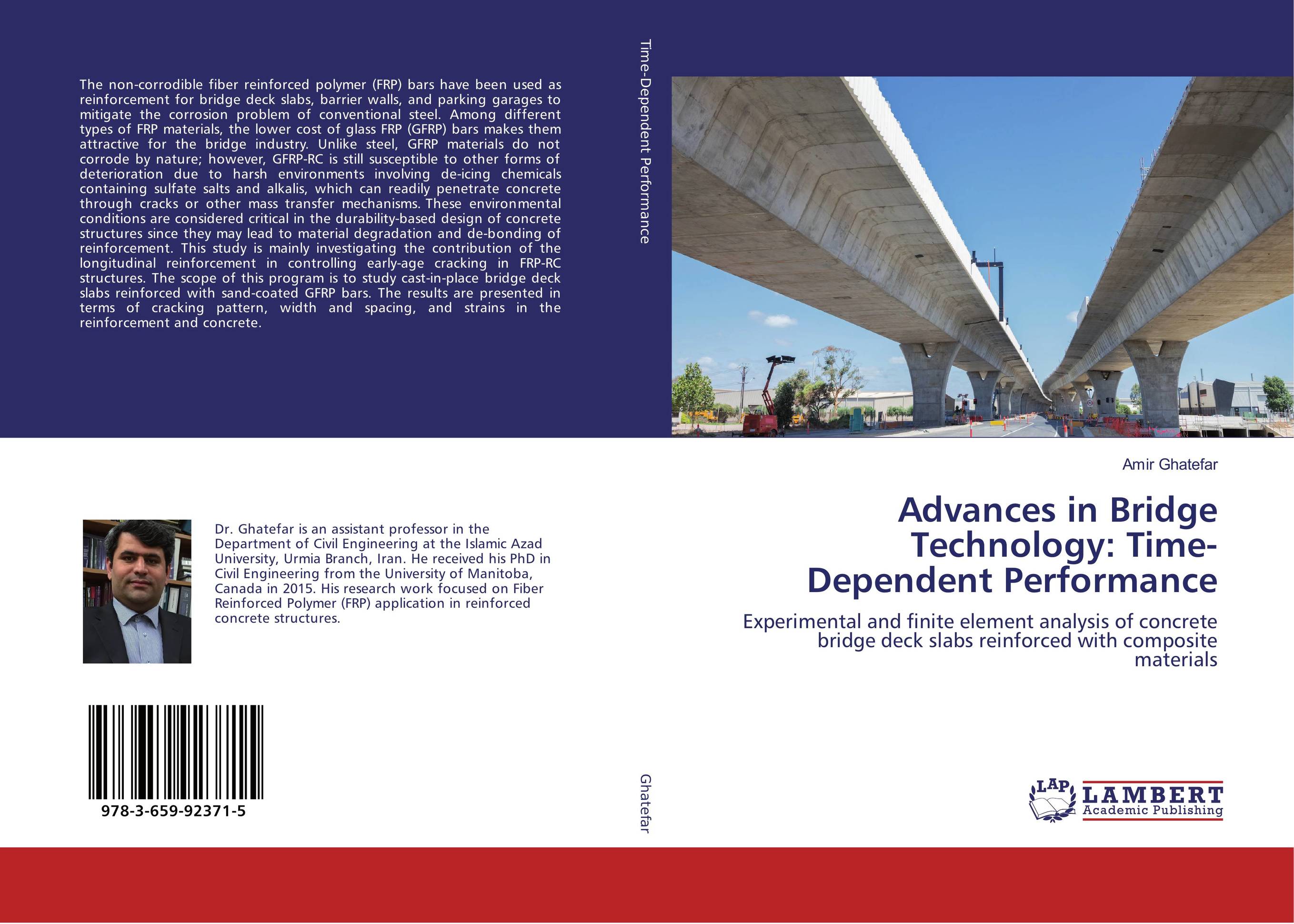| Поиск по каталогу |
|
(строгое соответствие)
|
- Профессиональная
- Научно-популярная
- Художественная
- Публицистика
- Детская
- Искусство
- Хобби, семья, дом
- Спорт
- Путеводители
- Блокноты, тетради, открытки
Advances in Bridge Technology: Time-Dependent Performance. Experimental and finite element analysis of concrete bridge deck slabs reinforced with composite materials

В наличии
| Местонахождение: Алматы | Состояние экземпляра: новый |

Бумажная
версия
версия
Автор: Amir Ghatefar
ISBN: 9783659923715
Год издания: 2016
Формат книги: 60×90/16 (145×215 мм)
Количество страниц: 204
Издательство: LAP LAMBERT Academic Publishing
Цена: 40423 тг
Положить в корзину
| Способы доставки в город Алматы * комплектация (срок до отгрузки) не более 2 рабочих дней |
| Самовывоз из города Алматы (пункты самовывоза партнёра CDEK) |
| Курьерская доставка CDEK из города Москва |
| Доставка Почтой России из города Москва |
Аннотация: The non-corrodible fiber reinforced polymer (FRP) bars have been used as reinforcement for bridge deck slabs, barrier walls, and parking garages to mitigate the corrosion problem of conventional steel. Among different types of FRP materials, the lower cost of glass FRP (GFRP) bars makes them attractive for the bridge industry. Unlike steel, GFRP materials do not corrode by nature; however, GFRP-RC is still susceptible to other forms of deterioration due to harsh environments involving de-icing chemicals containing sulfate salts and alkalis, which can readily penetrate concrete through cracks or other mass transfer mechanisms. These environmental conditions are considered critical in the durability-based design of concrete structures since they may lead to material degradation and de-bonding of reinforcement. This study is mainly investigating the contribution of the longitudinal reinforcement in controlling early-age cracking in FRP-RC structures. The scope of this program is to study cast-in-place bridge deck slabs reinforced with sand-coated GFRP bars. The results are presented in terms of cracking pattern, width and spacing, and strains in the reinforcement and concrete.
Ключевые слова: Finite Element Method, Bridge Engineering, Time-dependent Performance, Bridge deck Slabs



